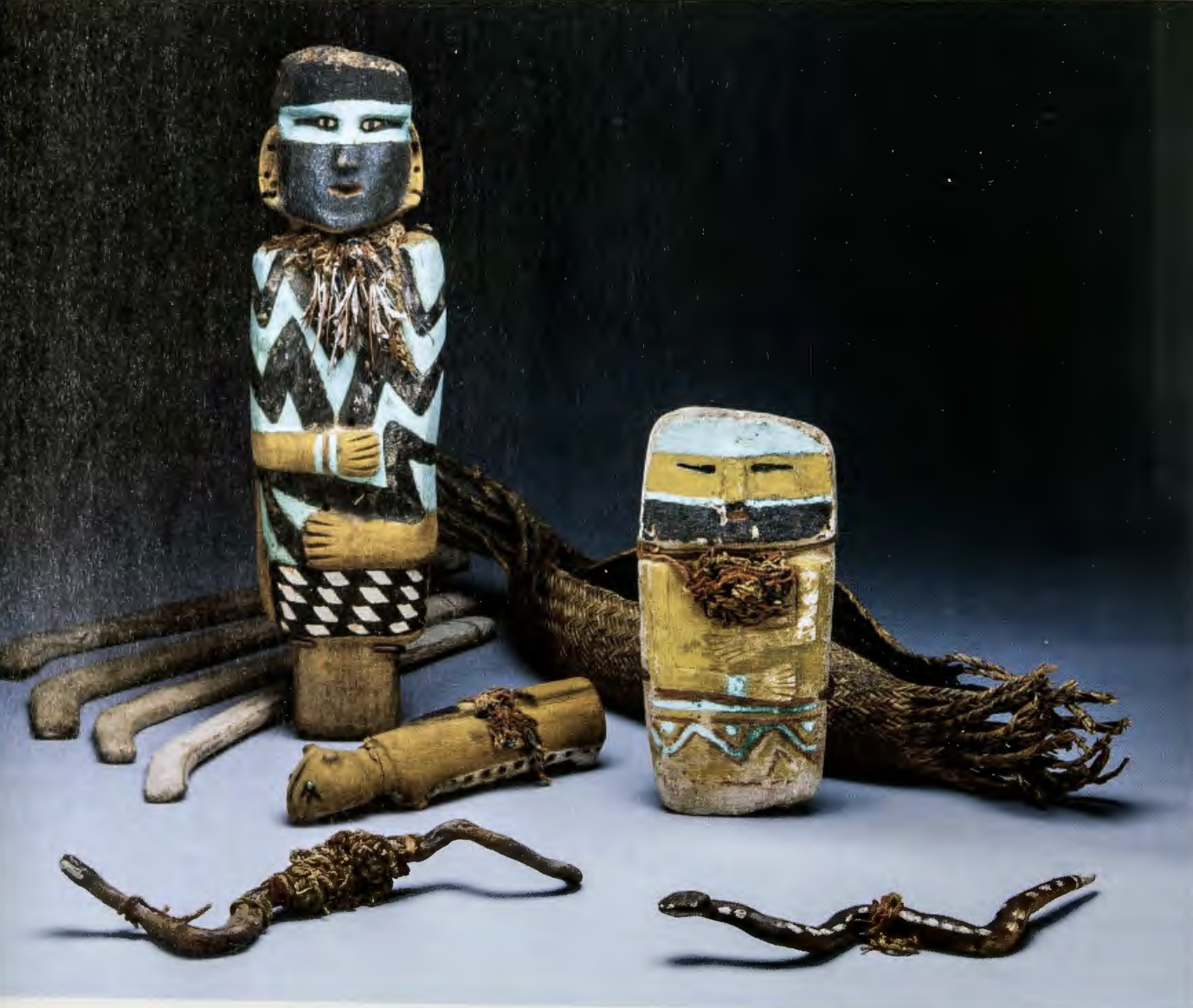Part 1: From Ancient Times To The Late Colonial Era
- Page ID
- 169157
THE PIPE TOMAHAWK on the facing page embodies several ideas that drive Part I. A product of diverse hands and ideological realms, it conjoins contradictory meanings: a pipe for peace, and a hatchet for war. Intended neither for smoking nor fighting, it was a cross-cultural gift, an ambivalent symbol of alliance between divergent worlds. A Native woman fashioned the quillwork. A white man forged the metal. The silver likely came from Mexico. The finished object made its way to England-perhaps the souvenir of an ancestor's foray to the New World.
In ancient times, aboriginal Americans transported both art and ideas across long distances. This set the pattern for an accelerated mobility of people and goods in the two centuries after 1492. Imperial ambitions propelled Europeans throughout the Americas. Their mobility-the Dutch in New York a:nd Surinam, the Spanish ranging from Argentina to California, the French in Florida, Canada and the Great Lakes region-surpassed that of the indigenous peoples. But after contact, many Native peoples were dislocated from their homelands due to white settlement, epidemic, forced relocation, inter-tribal raiding, and warfare. By necessity; they became increasingly mobile, too.
The story of cultural and artistic encounter in ancient and colonial North America is not a simple one. Starting several thousand years ago, in the eastern part of the continent, tribal chiefs marshaled people to build towns and ceremonial centers of impressive size. Later, European governments and their agents competed for control of land and resources. The ever-expanding European populations of North America expressed their differing cultural heritages in the ways they laid out settlements, painted portraits, and how they depicted and characterized Native and African peoples. And of course, West and Central Africans from many ethnic groups, transported against their wills across the Atlantic, brought traditions that would form part of the fabric of American culture.
Sometimes it is tempting to reduce complex cultural categories to simple ones: Indians, Blacks, Europeans. Yet, like Europeans, Indian peoples had age-old alliances and enmities, and a plethora of arts and customs, as did the Africans brought to this continent. And, of course, not all the inhabitants of the lands under English sovereignty were English. By the end of the seventeenth century, the Atlantic seaboard colonies included the Dutch, as well as religious refugees from across Europe: French Protestants, Sephardic Jews, and Protestant Germans. In the East, Indians remained visible in Native communities; as craftsmen and servants among the European population; and even-for some captives in wars and uprisings-as slaves. By the beginning of the seventeenth century, slaves were arriving directly from Africa, and indirectly from the Caribbean. The early artistic contributions of Indians and Blacks are now difficult to document, for much of what they made was perishable, and not carefully preserved.
In upcoming chapters we use terms such as "encounter" to discuss a variety of productive ways that diverse peoples met, interacted, and made art objects that were both meaningful and beautiful. This is not meant to understate the staggering inequalities of the different sides of these encounters. Yet simply to ascribe victimhood to Native Americans or African-Americans is to ignore the demonstrable fact that their arts and cultures have both endured and flourished, despite dire adversities. Indeed, like this pipe tomahawk, we shall see the multitude of ways in which art asserted cultural values in the face of conquest, and bridged vast cultural divides.

Thumbnail: RICHARD BUTLER et al, Pipe tomahawk, C. 1770. Iron, steel, silver plate, pewter, quillwork, wood, shaft 21¼ in (53.4 cm), blade 7¼ in (18.4 cm). Thaw Collection, Fenimore Art Museum, Cooperstown, New York.


